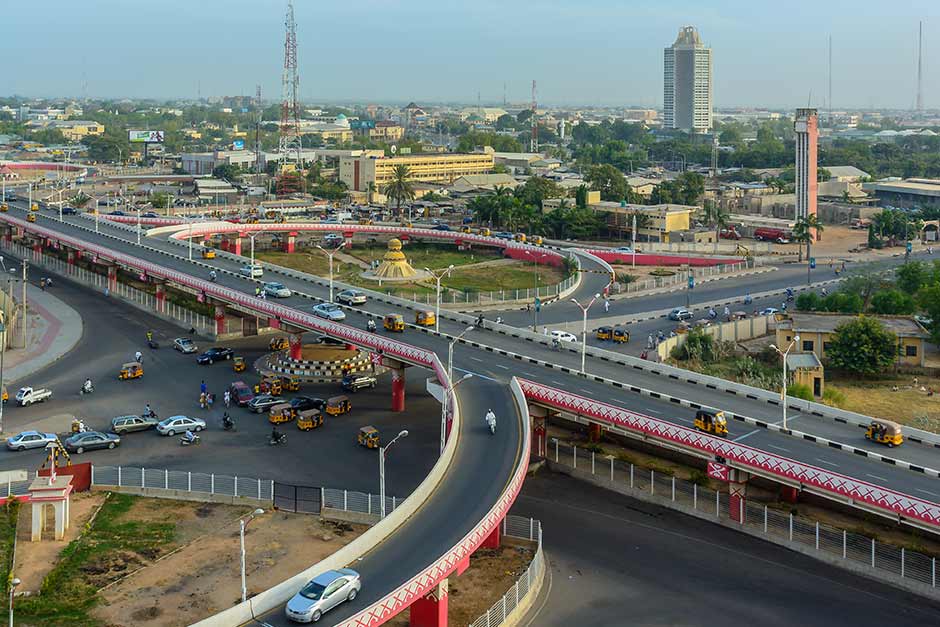Kano is to Northern Nigeria what Lagos is to the south (and the rest of the country)- a large, cosmopolitan city with commerce that’s big enough to dominate (and drive) the economy of the whole region.
Many of the North’s biggest companies are headquartered there. Its industrial sector boasts some of Nigeria’s largest manufacturing facilities. Its markets are among the biggest- and oldest -in the country. And it has trade links that stretch from the Atlantic to the Mediterranean coast in North Africa.
Read more about Did you know?
In the past, the city gained much of its wealth from its trade in grains, textile, and leatherwork. Although these segments have remained active, modern manufacturing has become a prominent part of its business landscape.
Kano has a long, proud history. But it hasn’t always been the clear economic leader of the North. The story of its ascendancy began in pre-colonial times, hundreds of years ago.
Kano’s Path to Economic Dominance
The city of Kano developed out of a settlement of iron-working hunter-gatherers around the 7th century AD. In the several hundred years that followed, it evolved into a walled town that had trade connections extending as far as the Maghreb.
Thanks to the expertise of its artisans, its dyed clothes became sought after across West Africa. It also became a collection and trading point for grains grown in the surrounding countryside. By the 19th century, Kano had established itself as a major hub for the production of leather items, especially footwear.
At the start of the colonial era early in the 20th century, Kano was home to a class of wealthy merchants who profited from the trade in such things as groundnuts, cotton, and leather. Perhaps the most famous of these men was Alhassan Dantata, the kolanut trader who, in his prime, was the country’s richest man.
New windows for exportation were opened with the arrival of such foreign trading companies as John Holt, PZ, UTC, and the Niger Company. The city was also connected to the Atlantic via a rail line constructed by the British.
The Emergence of Modern Industry in Kano
Initially, Kano’s journey to industrialization was slow and checkered. A few factories appeared early in the colonial era; many of them lasted only a few years. But starting around 1945, several manufacturing firms came on the scene, changing the face of the city’s business landscape.
Sign up to the Connect Nigeria daily newsletter
By the 1950s, Kano had its first industrial estate at Bompai. After Nigeria gained its independence in 1960, the city received support from the federal government that enabled it to accelerate its industrialization even further. The textile industry was particularly successful.
The oil boom of the 1970s drove manufacturing in Kano to new highs (just as it fueled economic growth elsewhere in the country). Numerous factories cropped up around this time; they produced a range of items, from edibles to household goods, personal care products, and leather goods. Four additional industrial estates were established.
Unfortunately, the oil glut of the 1980s and the ensuing economic difficulties disrupted this growth. As incomes fell and consumer demand dried up, many of the city’s industrial concerns either scaled back production or shut down permanently.
Resurgence in Contemporary Times
Investor confidence in Kano returned with Nigeria’s embrace of democratic rule. From the early 2000s, several large retail outlets were established in the city. One of them, the Ado Bayero Mall, is among Nigeria’s largest shopping malls.
The city remains a favourite destination for manufacturers looking to set up large scale production facilities. Its textile and grains markets attract visitors from across West Africa and beyond. And there’s plenty of potential for tourism, given Kano’s rich history and culture.
In 2007, Kano State had an estimated GDP of about $12 billion, making it one of the biggest non-oil economic enclaves in the country. A majority of its wealth- about 61% -still comes from agriculture. Commerce and industry, transportation and mining also account for a significant portion of its productive output.
Kano metropolis, now home to over 4 million people, is still growing. Every day, it receives new settlers seeking to improve their fortunes. It continues to offer them the hope of a more financially secure future, as it has for hundreds of years.
Featured Image Source: Hotels NG
Got a suggestion? Contact us: [email protected]


